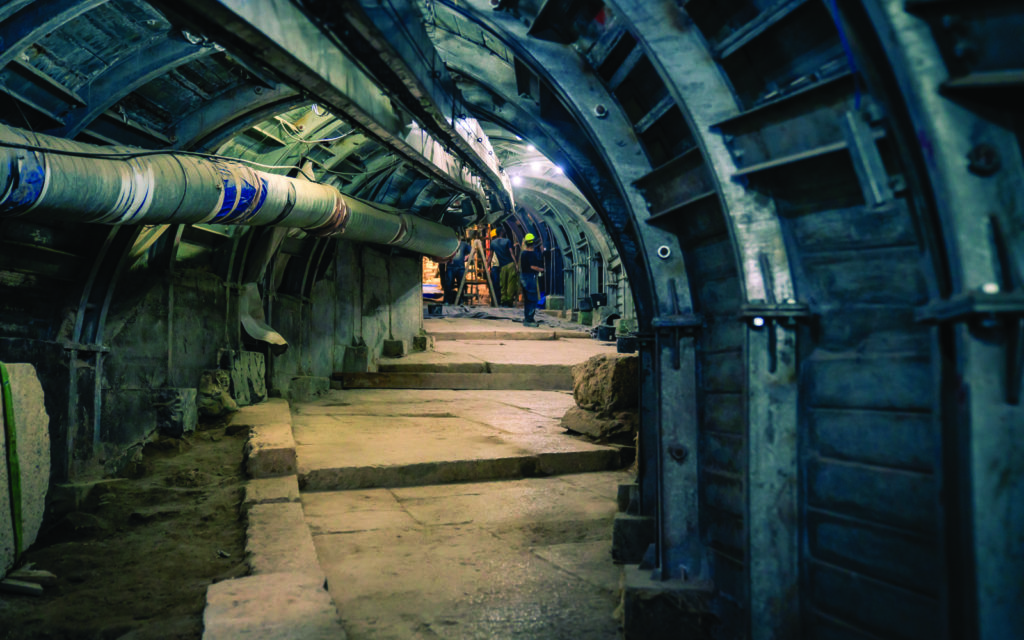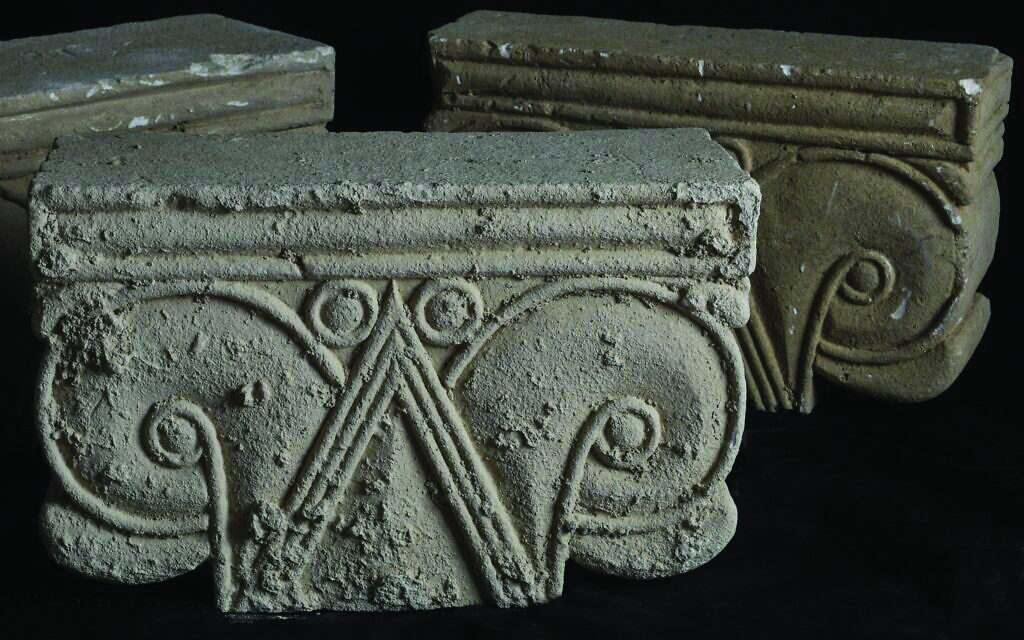
New Biblical Treasures Await the Return of Tourists to Israel
Published on: 14.10.2021By: David Parsons
Looking for a bright side to the Corona pandemic? The lack of tourism to Israel this year is giving many key archaeological sites here time to dig deeper, renovate and plan for the big crowds expected to return once the health threat begins to lift. In Jerusalem, this includes some amazing sites with new archaeological finds that will have one stepping right into the pages of the Bible.
In March, Israel shut its borders to foreign visitors in response to the coronavirus pandemic, and the number of tourists has flatlined. Still, the past year or so has seen a treasure trove of new biblical finds in Jerusalem and around the Land of Israel. For instance, in northern Israel a fortified city dating to the time of King David was just uncovered on the Golan Heights, and is believed to be the first evidence of what the Bible identifies as the ‘Geshurite’ people (ex., Joshua 12:5).
Meanwhile, in southern Israel a large citadel dating to the time of the Judges (3200 years old) was recently unearthed along the Guvrin stream near Kiryat Gat, which probably was constructed by the Egyptians as a defensive position in their wars against the Philistines.
But it is in and around Jerusalem where some of the most exciting biblical treasures have been found of late. For instance, in digs along the Western Wall archaeologists recently came upon an impressive underground living chamber dating to the early First Century but are unsure of its exact purpose so far. Also near the Temple Mount, an ancient coin was discovered from the Bar Kochba revolt-era (132-135 AD) with the inscription ‘Year two of freedom’.
Then there were two more large building complexes found in southern Jerusalem which – along with a similar site previously found at nearby Kibbutz Ramat Rachel – indicate that the Judean kings ruled over a vast area which needed such large centralized structures on the outskirts of the growing capital city to collect taxes and otherwise govern the surrounding regions.
One of these new sites was unearthed during construction work this year near the US Embassy in Arnona, some three kilometers south of the Old City. Archaeologists are describing it as a massive government complex from the time of kings Hezekiah and Menashe some 2700 years ago. There were 120 Hebrew-inscribed seal impressions on jars found in storage areas which held food collected as taxes for the Judean kings in First Temple times, with many jars marked as “Belonging to the King”.
Archaeologists surmise that during the final centuries of the Judean dynasty, they built the large administrative complexes at Arnona and Ramat Rachel to move their activities away from the walled City of David. These facilities remained active up until the Assyrian conquest and even were put back into use again when exiled Jews began returning to the Land of Israel from Babylon.
Just a few blocks away at the popular Sherover Promenade overlooking the Old City, archaeologists have just unveiled a lavish palace from the same late First Temple-era with three rare column capitals that match the Phoenician-style ones previously discovered in the City of David and which are thought to be symbolic of the Davidic dynasty.
Experts believe the ornate residence was built by a wealthy and perhaps noble Jewish family between the reigns of kings Hezekiah and Josiah, after the Assyrian siege on the city was lifted (2 Kings 19). Relieved by the retreat of the enemy, residents of Jerusalem appear to have ventured outside the walled City of David and expanded the city southward, as is also indicated by the administrative complexes from the same time period in Arnona and Ramat Rachel.
The three well-preserved column heads revealed at the site show skilled workmanship and are of the majestic style depicted on the five-shekel Israeli coin. They are now readied for public display at the City of David heritage center, awaiting an influx of visitors once the corona threat eases.
More secrets in the City of David

The City of David itself has been giving up more incredible secrets as well over the past year. After locating the original well opening to the Gihon Spring in the 1990s and then the palace of King David in 2005, archaeologists have since unearthed the Pool of Siloam of New Testament fame, followed by the newest discovery of the ancient ‘Pilgrimage Road’ connecting the pool to the Temple Mount hundreds of meters to the north.
The Pilgrimage Road (or ‘Stepped Street’) is a paved pathway stretching some 600 meters from the Pool of Siloam uphill to the Temple Mount. Jewish pilgrims would take a ritual bath in the pool before ascending up the steps to worship at Herod’s refurbished Temple. It is now apparent that both sides of the street were lined with shops, offering pilgrims a variety of goods to buy after their long journey to Jerusalem.
Last January, a rare stone table top used to measure exact liquid volumes was unearthed in a large courtyard along the Pilgrimage Road, leading archaeologists to assess that the area served as a central square in the main market in Jerusalem in Second Temple times. The stone table attests to the weights and measures methods used in selling commodities in the shuk – in this case for olive oil or wine.
Underneath the Pilgrimage Road is a Roman-style drainage channel where evidence has emerged confirming ancient Jewish accounts that many Jews hid there during the siege of Titus on Jerusalem in 70 AD. It was the discovery of the sewer system a decade ago which led archaeologists to eventually find the paved street just overhead.
The street and market were open-air in the First Century but today they are located five meters (16 feet) under current street level. Work is being done in two shifts per day to simultaneously excavate the subterranean street and prepare it for the throngs of visitors expected within a few years.

Overhaul at the Tower of David
Also of great interest to Christians will be the new finds soon to be on display at the iconic Tower of David, located at the Jaffa Gate entrance into the Old City. Last rebuilt by Suleiman the Magnificent in the 1500s, the historic citadel is using the fall-off in tourism to give the site a major overhaul for when the crowds return. The Tower’s revamped museum will boast seven new galleries which will tell the story of Jerusalem in all its time periods.
The work also includes the most extensive excavations in a century, and reports indicate it is already uncovering hidden passageways, ancient walls and fortifications, and other features unknown before. Most of the digs are focused on previously unstudied areas of the fortress dating to the Crusader and Islamic periods, when Jerusalem fell to Christian and Muslim invaders numerous times over several centuries. One hidden passage uncovered recently may have been used by Crusaders to escape the Citadel.
But the most exciting new area of the ancient fortress for Christians will be a place called the Kishle, which many now believe contains the courtyard where Jesus was brought before King Herod. The foundations of Herod’s Palace were discovered a couple years ago but have only been accessible to select group tours so far. But soon, the digs and renovations will hopefully allow all visitors to see an area where the “Pavement” – or Praetorian – was likely located. This was a public courtyard below Herod’s palace where many scholars now concur that Jesus was tried by Pontius Pilate.
The current excavations could therefore completely re-draw the traditional route of the Via Dolorosa – the ‘Way of Sorrows’ – which Jesus trod on his way to the Cross. So get ready for some new surprises when you can finally visit Jerusalem again.